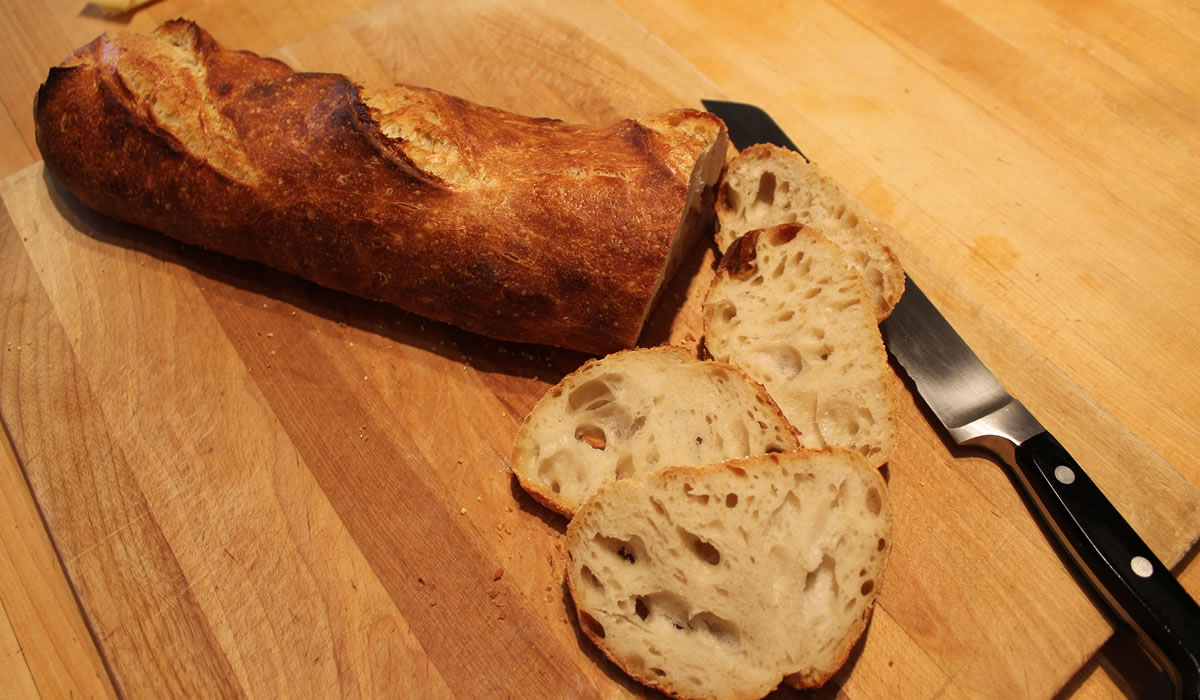This is classic the more I learn, the less I know. Which, of course, means I need to learn more. To know less. Or something…
Yesterday’s sourdough got me thinking about the things I liked in bread. Today, I started out with a new idea – and immediately screwed up the measurements. I had to go back and redo things a bit – so I ended up with more dough than I had anticipated.
I decided to use the microwave as a proofing box. I boiled a 2 cup measuring cup full of water, set it off to the side, and put the bowl of dough inside. For the first hour, it just sat there. It seemed like it didn’t want to rise. Victor told me I make good bread, so don’t worry about it. Dump it and move on. Great advice except I’m stubborn and pigheaded. Or, indefatigable. Or… stubborn and pigheaded. Then… I noticed a bubble. It was tiny, but it was there! I did a pull, fold, and stretch after an hour and a half. It almost looked promising. After two hours, it had actually increased in size a bit. In three, the dough was like magic. Rising, folding, forming, resting… Another classic lesson in patience. I have so much of it. I formed two loaves and patiently let them rise, again…
I really wanted to see if I could mimic the Larraburu sourdough of my youth. My starter isn’t nearly sour enough to accomplish something like that and I didn’t want to do an 18 hour or overnight-in-the-refrigerator rise to increase the sourness. I wanted the bread today! Plus, my oven isn’t big enough for a real loaf. Nor do I have steam injectors. But… I am stubborn and pigheaded. I hit a few San Francisco websites and searched for Larraburu – and got some good ideas and information.
What’s interesting about this is I have never in my life tried to replicate something I had elsewhere. I have gotten great ideas and I have made often things based upon things I’ve had or seen, but I’ve always been too much of a realist to think I could make at home something a commercial kitchen produced. I’ve worked in too many commercial kitchens. I know better.
But knowing I couldn’t make it the same meant I needed to delve into it more deeply if I really wanted a certain outcome. It started me thinking – and learning – more about the science of bread making. I know how to bake bread. I know what different types of dough should feel like. I have made lots of breads – my favorite Italian rustic breads use bigas – starters. And, it seems I’ve been doing a lot of things right – without actually knowing why it was important or necessary. But there’s so much more to learn…
I finally have a bit of a grasp on Baker’s Percentage in a recipe – so that’s a start. The more I know the more I need to learn…
Here’s the basic recipe for today’s bread. I actually made almost 1 1/2 of this because I screwed up my initial measurements – and I wasn’t going to toss out perfectly good flour and water! I made two loaves – the recipe should only make one large loaf.
Measurements are in grams.
Sourdough Bread
- 565 gr flour
- 339 gr water
- 11 gr salt
- 85 gr starter
**About an hour before baking, preheat oven with baking stone to 500°F. Have a sheet pan on the rack under for boiling water for steam.
Mix the flour and water in a stand mixer for 1-2 minutes. Cover the mixer bowl tightly and autolyse* for about an hour.
*Autolyse is a method whereby the flour and water (of a bread recipe) are first mixed together, then rested for a period of time. This helps make exceptionally extensible dough.
Sprinkle the salt on the dough and add the starter. Mix for 1-2 minutes to incorporate everything and then mix for 5 minutes. If necessary, adjust the dough consistency by adding small amounts of water or flour. The dough should be tacky but not sticky and should clean both the sides and bottom of the mixing bowl.
Transfer the dough to a clean, lightly oiled bowl. Cover tightly.
Ferment at 105º F for 2 1/2 to 3 hours in a humid environment. A microwave with a cup of boiling water works well for this. Stretch and fold once at 1 1/4 hours.
Remove from bowl, form into a ball, and let rest on the counter for 20 minutes – covered with a towel.
Shape into a boule or bâtard and place on cornmeal-covered peel.
Cover with a towel and let proof another 30-40 minutes.
Make several slits on dough with razor blade or very sharp knife. Transfer the loaf to the baking stone. Pour 1 cup boiling water into pan under baking stone and quickly close oven door. Turn down the oven to 450º F.
Bake about 40 minutes for a bâtard or 40-45 minutes for a boule. Look for a nice, dark crust.
Cool on rack completely before devouring.
If I only made this bread for the rest of my life, it would not be a bad thing. It really came out great! But it won’t be the only bread I ever bake, again, because I have a dozen ideas forming in my little mind…
I just put a loaf in the freezer so I’m not going to be making any more bread for a few days, at least… but I see a sourdough walnut raisin in our future…
This is fun!


